Power Usage Effectiveness (PUE) is more than just a metric; it's your gateway to unlocking significant energy savings and enhanced operational efficiency. At EziBlank, we understand the importance of optimising your data centre’s performance while reducing power consumption. Our innovative air-flow management solutions, including our expertly designed blanking panels, not only help you achieve better PUE ratings, but also protect your infrastructure investment. Join the growing number of Australian businesses transforming their energy management strategies with EziBlank's cutting-edge products – a smarter choice for a sustainable future.
Green Data Center Concepts
Green data centre concepts focus on minimising the environmental impact of these energy-intensive facilities while maintaining high levels of performance and reliability. Key strategies include using renewable energy sources, such as solar or wind power, to reduce reliance on fossil fuels and incorporating energy-efficient technologies like advanced cooling systems that utilise free cooling or liquid cooling methods. Additionally, green data centres often employ design features that enhance energy efficiency, such as cold and hot aisle containment to optimise airflow and reduce cooling requirements. The adoption of energy-efficient hardware and the implementation of effective power management practices, including real-time monitoring and optimisation of power usage effectiveness (PUE), are also central to green data centre operations. By integrating these concepts, businesses can reduce their carbon footprint, lower operating costs, and contribute to a more sustainable future.
Read More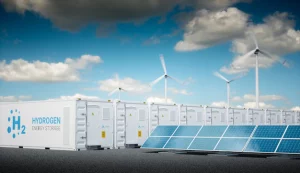
Designing an Energy-Efficient Data Center
Designing an energy-efficient data centre requires a strategic approach that combines advanced technology with best practices in layout and infrastructure management. The foundation of an energy-efficient design begins with optimising the physical layout, such as implementing hot and cold aisle containment to prevent the mixing of hot and cold air, which significantly reduces the burden on cooling systems. Incorporating energy-efficient hardware, such as servers and storage devices that consume less power, is also crucial. Additionally, leveraging renewable energy sources like solar or wind power can greatly reduce the carbon footprint of the facility. Effective monitoring and management tools are essential for tracking energy use and making real-time adjustments to improve efficiency. By focusing on these elements, a data centre can achieve optimal performance while minimising energy consumption and operational costs.
Read More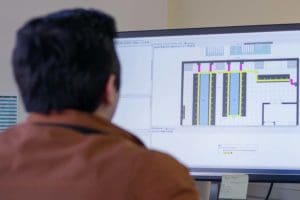
Data Center Energy Efficiency Measures
Improving energy efficiency in data centres is essential for reducing operational costs and minimising environmental impact. Several key measures can be implemented to enhance efficiency, starting with optimising airflow management through the use of blanking panels, which prevent the recirculation of hot air and ensure that cool air is directed precisely where it’s needed. Upgrading to energy-efficient hardware, such as servers and storage devices with lower power consumption, is another important step. Additionally, adopting advanced cooling techniques, such as liquid cooling or free cooling, can significantly reduce the energy required to maintain optimal temperatures. Monitoring tools that track power usage effectiveness (PUE) allow for real-time adjustments to improve efficiency further. These measures not only lower energy consumption and costs but also contribute to a more sustainable and resilient data centre operation.
Read More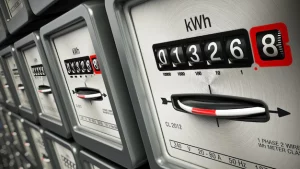
Green Data Center Case Study
A green data centre case study highlights how implementing sustainable practices can lead to significant environmental and financial benefits. In one example, a data centre achieved substantial energy savings by integrating renewable energy sources such as solar and wind power into its operations. Additionally, the facility utilised advanced cooling technologies, including free cooling and liquid cooling systems, which drastically reduced the reliance on traditional, energy-intensive air conditioning. The implementation of hot and cold aisle containment systems further optimised airflow, minimising energy waste. Through these initiatives, the data centre not only reduced its carbon footprint but also realised considerable cost savings, demonstrating that sustainability and efficiency can go hand in hand. This case study serves as a model for other facilities aiming to transition towards greener, more energy-efficient operations.
Read More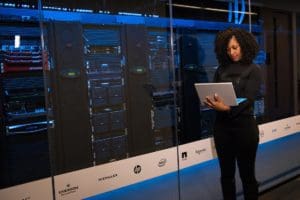
The Advantages of a Green Data Center
A green data centre offers numerous advantages, both for the environment and for the businesses that operate them. By prioritising energy efficiency and sustainability, green data centres significantly reduce their carbon footprint, contributing to environmental conservation and aligning with global efforts to combat climate change. These facilities often utilise renewable energy sources, such as solar or wind power, which not only cuts down on greenhouse gas emissions but also reduces reliance on traditional, non-renewable energy sources. Additionally, green data centres implement advanced cooling technologies and airflow management strategies, such as hot and cold aisle containment, to optimise energy use and lower operational costs. The financial benefits are substantial, as reduced energy consumption translates directly into cost savings over time. Furthermore, operating a green data centre can enhance a company’s reputation, demonstrating a commitment to sustainability that resonates with environmentally conscious customers and partners. Overall, the shift towards greener data centres is not only a responsible choice for the planet but also a strategic business decision.
Read More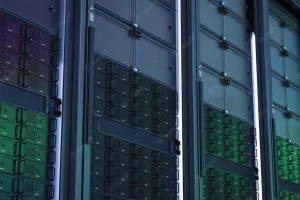
How to Reduce Energy Consumption in a Data Center
Reducing energy consumption in a data centre is essential for cutting operational costs and promoting sustainability. One of the most effective strategies involves optimising airflow management by using blanking panels to block unused rack spaces, which prevents hot air recirculation and ensures that cool air is directed where it’s needed. Implementing hot and cold aisle containment systems further enhances cooling efficiency by separating hot and cold air streams, reducing the energy required for cooling. Upgrading to energy-efficient hardware, such as low-power servers and storage devices, can also significantly lower energy consumption. Additionally, adopting advanced cooling technologies like liquid cooling or free cooling can drastically reduce the reliance on traditional air conditioning. Regular monitoring and analysis of power usage effectiveness (PUE) allow data centre managers to identify inefficiencies and make real-time adjustments to optimise energy use. These measures, when combined, can lead to substantial energy savings, lower operating costs, and a reduced environmental impact for the data centre.
Read More
Defining and Being a Green Data Center
A green data centre is one that prioritises sustainability and energy efficiency in its design, operations, and maintenance, aiming to minimise its environmental impact while maintaining high performance. This is achieved through several key strategies, including the use of renewable energy sources such as solar or wind power to reduce reliance on fossil fuels. Energy-efficient hardware, advanced cooling techniques like free cooling or liquid cooling, and effective airflow management using hot and cold aisle containment are also integral to green data centres. These facilities often implement rigorous energy monitoring and management practices to optimise power usage effectiveness (PUE) and reduce waste. Being a green data centre means not only adopting these technologies and practices but also committing to ongoing improvements and innovations that further reduce environmental impact. This approach benefits both the planet and the bottom line, as reduced energy consumption translates to lower operational costs, and the commitment to sustainability can enhance a company’s reputation and appeal to environmentally conscious customers and partners.
Read MoreThe Complete Guide to Data Center Cooling
Effective data centre cooling is essential for maintaining the reliability and efficiency of IT infrastructure. Key strategies include optimising airflow through techniques like hot and cold aisle containment, which separates hot and cold air to enhance cooling efficiency. Blanking panels are used to fill unused rack spaces, preventing hot air recirculation and ensuring cool air reaches where it's needed most. Advanced technologies like liquid cooling, which circulates coolant directly to hot components, and free cooling, which utilises natural cold air or water, further reduce energy consumption. Real-time monitoring of temperature and humidity allows for precise control, ensuring optimal conditions while minimising energy use. Together, these approaches protect equipment, lower operational costs, and contribute to a more sustainable data centre.
Read MoreBest Practice Guide for an Energy Efficient Data Center
Creating an energy-efficient data centre involves implementing best practices that optimise performance while minimising energy consumption. Key strategies include effective airflow management, such as using blanking panels and hot/cold aisle containment to prevent the mixing of hot and cold air, thus reducing the load on cooling systems. Upgrading to energy-efficient hardware and utilising advanced cooling technologies like liquid or free cooling can significantly lower energy use. Regular monitoring and optimisation of power usage effectiveness (PUE) are also crucial, allowing for real-time adjustments that enhance efficiency. These practices not only reduce operational costs but also contribute to a more sustainable and environmentally friendly data centre.
Read More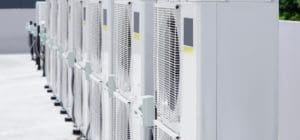
The Ultimate Guide to Data Centers
Data centres are the backbone of the digital world, housing the servers and networking equipment that power everything from websites to cloud computing services. A well-designed data centre must balance performance, efficiency, and security, with key considerations including location, infrastructure, power supply, cooling systems, and security measures. Effective airflow management, such as the use of blanking panels and hot/cold aisle containment, is essential for maintaining optimal temperatures and reducing energy consumption. Additionally, data centres must incorporate robust backup systems, such as uninterruptible power supplies (UPS) and generators, to ensure continuous operation in the event of power failures. As businesses increasingly rely on digital infrastructure, the role of data centres continues to expand, making it crucial to optimise their design and operations for reliability, efficiency, and scalability.
Read More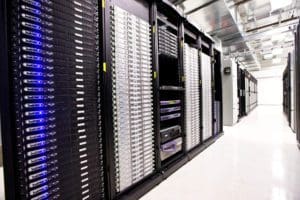
Profiling your data centre for greater efficiency
Profiling your data centre is a crucial process for understanding its current performance, identifying inefficiencies, and planning for future improvements. This involves a comprehensive analysis of various aspects of the data centre, including power usage, cooling effectiveness, airflow management, and overall infrastructure performance. By profiling, data centre managers can pinpoint areas where energy is being wasted, such as hot spots caused by poor airflow or overcooling. Tools like temperature sensors, power meters, and monitoring software are often used to collect data that provides insights into how well the data centre is operating. With this information, targeted strategies can be implemented, such as optimising airflow with blanking panels or adjusting cooling systems, to enhance energy efficiency, reduce costs, and improve the reliability and lifespan of the equipment. Profiling is an essential step in ensuring that a data centre operates at peak efficiency and is prepared to meet future demands.
Read More
